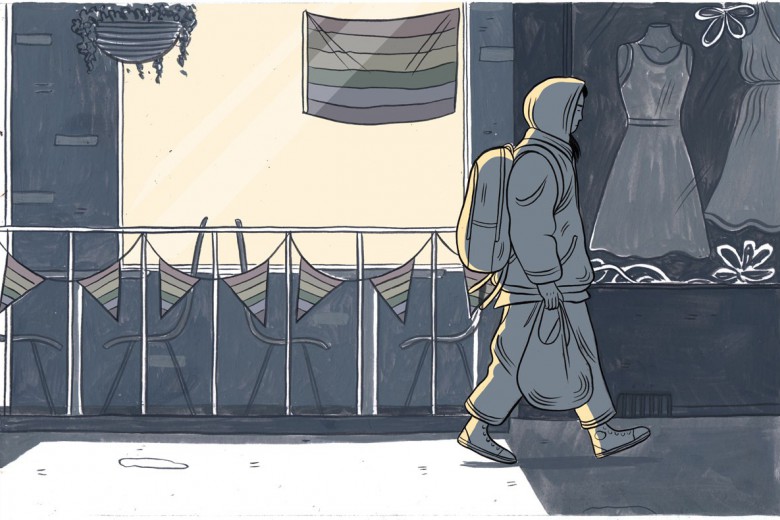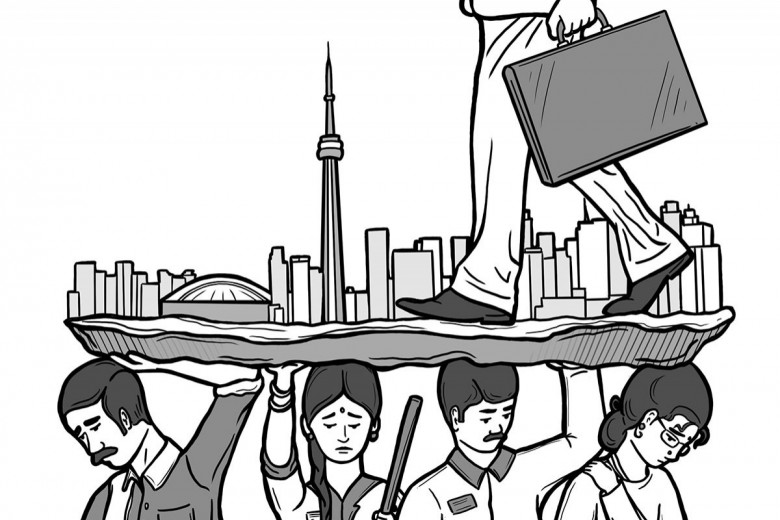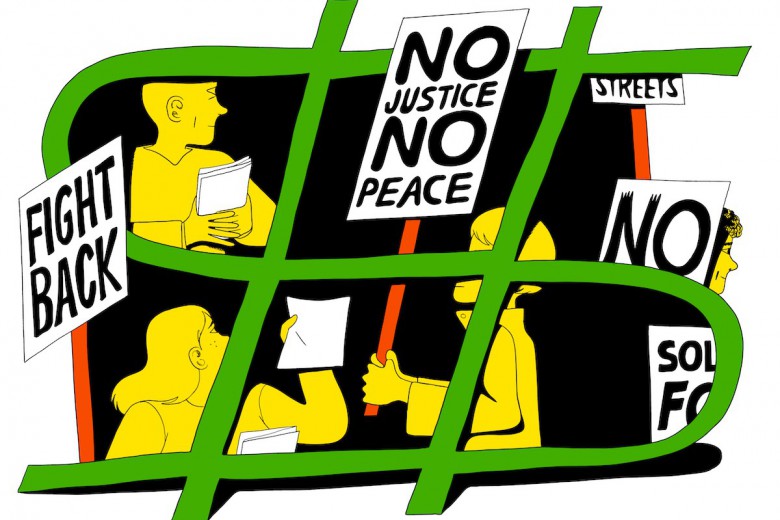In 1995, Mike Harris took power and promptly slashed Ontario’s welfare rates by about 22 percent. Even before the cuts, welfare condemned people to life below the poverty line. But the new, lower rates were almost unsurvivable.
A year later, evidence suggested that the cuts had led to increased intimate partner violence. Violence shelters reported that women, inquiring about checking in, would find out how little money they could access to support themselves on their own, and give up on leaving their abuser. Some who had already fled a relationship returned for financial reasons. Some considered relinquishing custody of their children to an abusive ex, “because at least they will be fed.”
“Every single day, not once, not twice, several times a day I retraumatize myself. I go over and over 13 years of marriage because if I didn’t it would be easy to pick up the phone and say, ‘I can’t make it without you,” a woman near Windsor told the Globe and Mail in 1996.
In 1996, Ontario’s welfare rate was $520 a month – $940 in today’s money, adjusting for inflation. But the rate now stands at just $733 a month, 28 percent lower than it was in the wake of Harris’ cuts.
Researchers, advocates, and survivors have long known that poverty is the primary driver for intimate partner violence for most women in Canada. Poor women are more likely to be victimized, both because the stresses of poverty can cause violence and because poverty’s constraints make it harder to leave a violent person – and to stay away. Decreasing poverty decreases intimate partner violence.
However, Indigenous women face the highest rate of intimate partner violence, and the context of their victimization is exceptional. The ongoing impacts of colonization – centuries of settlers killing them, criminalizing their culture, kidnapping their children, and stealing their land – is the biggest cause of the violence they face. Research suggests that the rate of intimate partner violence against Indigenous women would be 40 per cent lower if they were no poorer than non-Indigenous women in Canada (their inordinate poverty is also born of colonization). But remedying poverty alone wouldn’t come close to ending the disproportionate violence they face.
Despite the ironclad evidence, lawmakers have long sidelined socio-economic solutions. (They have also stonewalled calls for Land Back.) Instead, they keep deploying cops, courts, and prisons to try to protect women. History shows that it does not work.
The modern push to fight intimate partner violence with state violence dates back to 1984. That year, a single small study in Minneapolis found that arresting men for suspected intimate partner violence – instead of either mediating or ordering men to leave the house for a few hours, which were what police usually did back then – was more effective at deterring further violence. Legislators in Canada and the U.S. rushed to implement mandatory arrest policies.
But further research found that while criminalization protected better-off women, it put poorer women in even greater danger. Arrests deterred some married men who had jobs, but they increased the likelihood of future violence by unemployed men. And unemployment – alongside the poverty that often goes with it – is itself a major risk factor for intimate partner violence. (As a rule, incarceration is criminogenic: it increases someone’s odds of getting incarcerated again.)
Nevertheless, the state has doubled and tripled down on the criminal legal system. In a rare case of political unity, Canada’s politicians recently passed a bill to further expand the policing of intimate partner violence. These changes have helped survivors who have the resources (read: money, whiteness) and capacity to navigate the system. The symbolic power of the law has also helped change the culture around intimate partner violence, transforming it from a joke to a scourge.
But the criminalization of intimate partner violence has also criminalized many survivors who aren’t “perfect” victims – those who are Indigenous; who are Black; who have criminal records; who fight back. Since the 1980s, the criminal legal system has ensnared women at higher rates in part because police often arrest both victim and abuser in cases of intimate partner violence, which continues despite “primary aggressor” laws meant to curb the practice. Women have also been arrested, hauled into court, and even jailed to try to force them to testify against a partner.
In many cases, women don’t want their abusive partners locked up – they just want them to stop being abusive. They may still love them, co-parent with them, rely on them to help keep a roof over their heads. Just two in ten relationships with intimate partner violence are ever reported to the police, and reporting rates have been low for decades.
“I’ve thought so many times about calling the police. If truth be known, I’ve thought about it for years – to teach him a lesson, to make him see what he’s doing. But I always figured it would do more harm than good,” a Canadian woman explained in a 1987 study. “I call the police, and bang, he’s out of a job, and jobs aren’t so easy to come by here. Then where are we at? Things’ll just get worse. We’ll have no money. He’ll start drinking more. He’ll be even more angry at me and he’ll hit me more. So where’s the sense in calling the police?”
There will always be violence. But there will be less of it when no one has to strain to meet their material needs.







